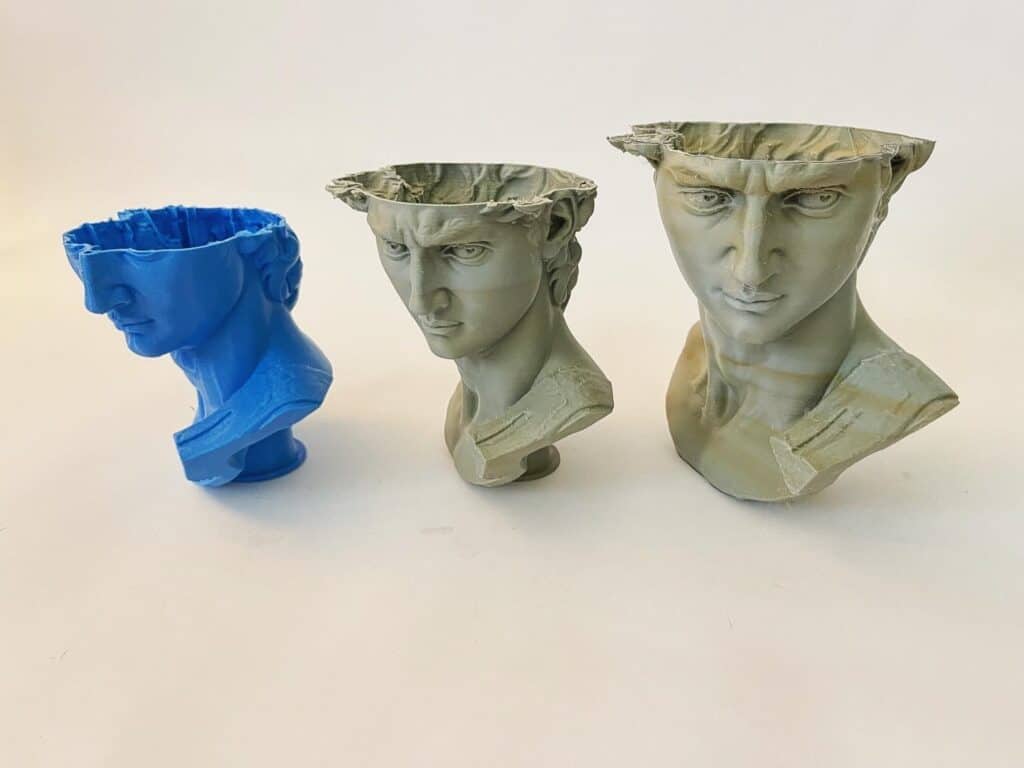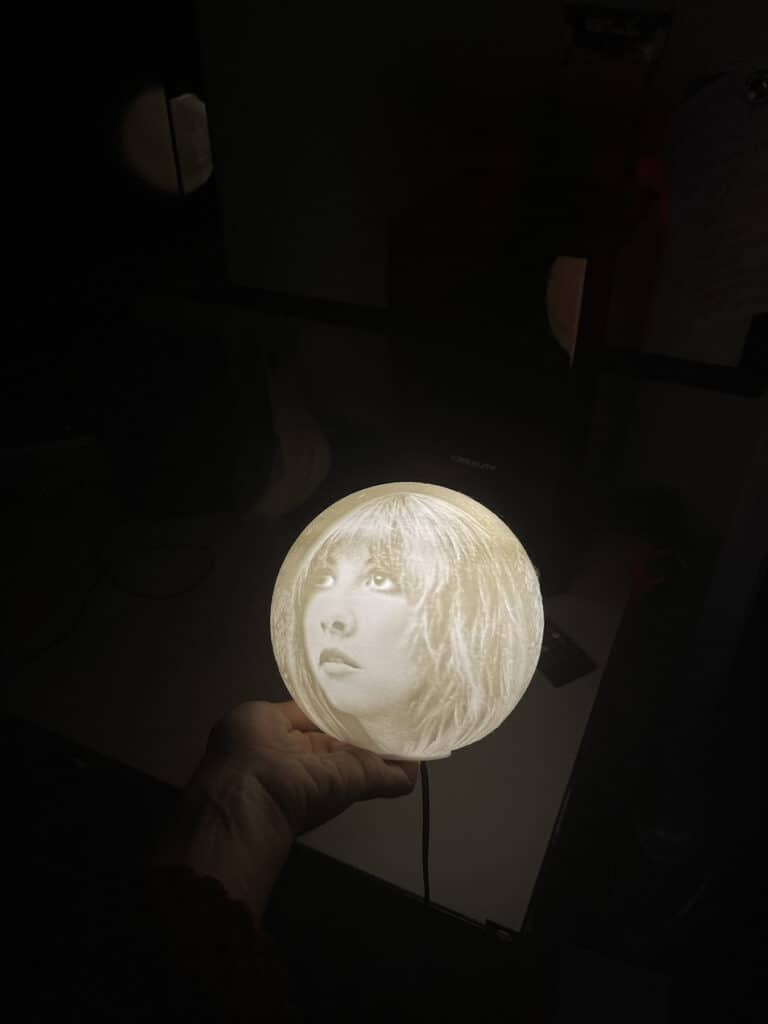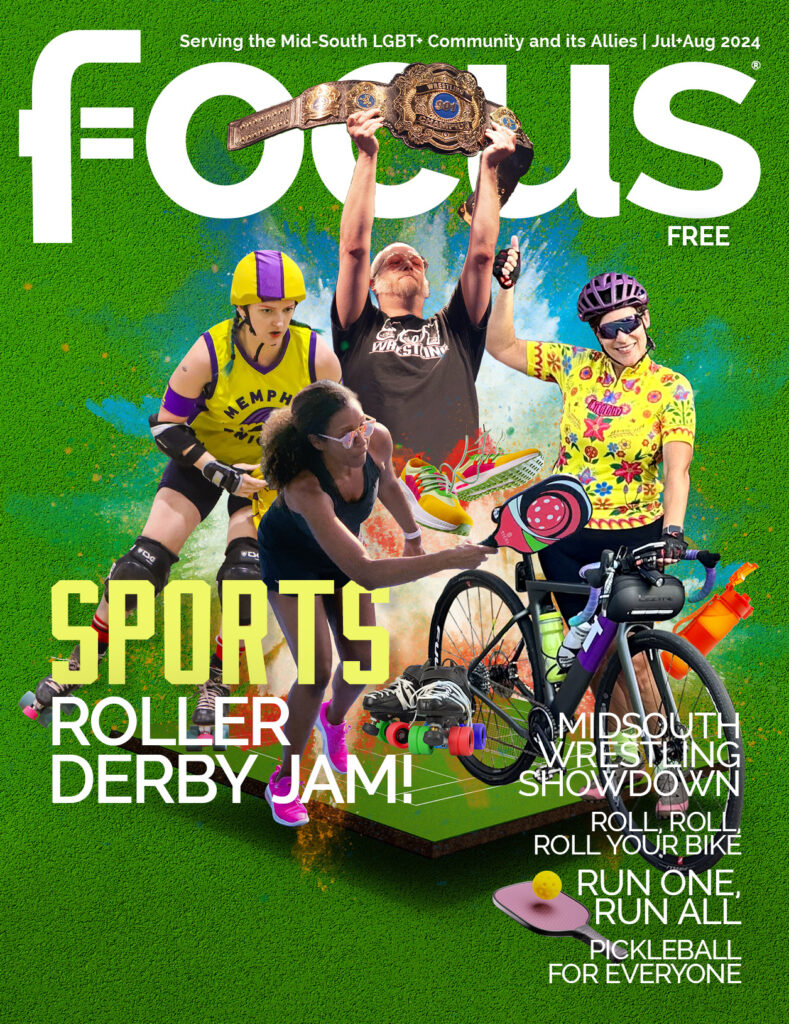by Tricia Dewey | photos by Andrew Stanford
By day Andrew Stanford makes ad content and is a videographer and photographer for a tool manufacturing company; otherwise he’s working and experimenting with his art, primarily these days with 3D printing creations.
TD: Hey Andrew, I want to get into your 3D printing ideas but first can you explain a little how you got started on the art trail in general.
AS: I’ve always been an artist at heart. I’ve always made stuff. I couldn’t really draw or paint so photography became my next thing that I kind of latched onto. I got my first camera around 14 and I just started off by shooting local bands and friends. I went to the Savannah College of Art and Design. I graduated in 2012 with a degree in photography and printmaking and since then I’ve always been really fortunate to work in the photography and video field, but I’ve always had other hobbies.
Before the pandemic started I did a lot of freelance work for Focus Magazine and some local events and then when the pandemic hit, pretty much all my freelance work just dried up overnight. I didn’t really have anything to work on outside of my regular 9 to 5. I’ve always really been interested in computers and robots and technology and I’ve seen the 3D printing technology come about over the past couple years, but it seemed out of reach because I didn’t really understand it and it seemed very expensive. Then when I was stuck at home during the pandemic’s first couple of months I started to research it.
In December 2020 I bought my first printer and started figuring it out, watching YouTube videos, consuming anything I could on this new technology. And then next thing I know I bought another printer and another printer and I was up to five printers. I started making stuff every day. At first I found files online. There’s a whole community of makers that design 3D files and put them online for free. I was having fun making knick knacks, then my display shelves got full. I wanted to either figure out how to make a profit from this or utilize my art. I’m a photographer, photos come first and being a printmaker I really love having prints or tangible objects that you can look at. The whole digital revolution is a double-edged sword. I love digital content but at the same time, it’s fleeting. You put something on Instagram and people like it for a day or two and then it’s gone. And so I like having a tangible object that’s in your hands. So I figured out how to create lithophanes, basically turning a photograph into a 3D print, when you put a light behind it you can see the image. It basically turns it into a negative that becomes a positive 3D textured photograph when light is added. So with 3D printing it just prints up layer by layer. You tell the computer I want this layer to draw this and then the next layer on top of it to draw this, and so it basically does that on a millimeter scale and it builds up a photograph. I really enjoy making those.
So you make the file for that with your own photograph? You have to talk to me about this process like I’m 5 years old, although some 5-year-olds might get this.
Any digital photographs that you have, whether taken with your cell phone or scanned into a computer, I then put it into a program and convert it to a 3D file. I have a few different kinds of 3D printers. One is an FDM printer, which uses plastic, and that is where the printer is laying it down layer by layer, melting plastic basically, and pushing it through a little funnel or a little nozzle, and that’s what causes the larger detailed piece made of biodegradable plastic. They take a lot longer but you can make a lot bigger objects with them. The other one is resin printing and that is what I’ve been using lately. It’s a little messier because you’re dealing with liquid resin. You have a vat where you pour the liquid and it sits on top of this UV light and the light flashes the pattern of each layer and that’s what builds up the 3D print.

So on your Instagram videos does this have light behind it when they’re used or is that just the way you were photographing it?
That’s how you actually see the photograph when it has a light shining behind it. When the light is turned off it looks like an engraving. When you shine a light through it you see the photograph pop out. The box I designed that you can see on my Instagram is about a 4×4 inch box to fit this particular light that I can use with multiple panes. So I designed the box around a light and made it so you can pop these photos in and out. The idea is if someone wanted this they could have three or four different images and just switch them out.
Is the lithophane idea something you came up with?
It was a process that other 3D printers were doing but I haven’t seen anyone locally doing it. It’s a whole new way of looking at the print, having this unique product in your hand.
Some of them have an eerie or ethereal feel to them?
They definitely have this spooky, creepy, vintage vibe to them. I have a different project I’ve recently developed working with an old camera from 1902. It’s a 5X7 Conley that shoots actual daguerreotypes. You would usually use either wet plate process, or film, or paper negatives to shoot with this camera. The image is projected on the back glass. So I designed a little adapter that fits onto the back of my camera and allows me to put my cell phone into it. It basically photographs the glass plate with my cell phone camera. Then I manipulate it digitally, edit it however I want and send it to the 3D printer. It combines old and new processes with new technology, all weaved together in this weird way.
I took this camera to Elmwood Cemetery, the first time I really got to play with it and use it in a real environment. The photos look like they were shot in the 1860s. I really enjoy that process and telling people about it, especially when I can show what I’m talking about.
I saw the statue of David planter–how do you translate the statue into a 3D scan?
A project called “Scan the World” from a website MyMiniFactory holds a collective of all the major museums all over the world and contains scans of all their major art works, stuff like the David statue and the Apollo capsules from the Smithsonian and they’re all free to use. You just go to this website, download the 3D file and use it however you want. I took David, chopped the head off, put a hole in it, and turned it into a planter. I’ve sold a few of those but I think that operation is really awesome and it’s sharing art, taking old art, cutting it up, and making it into new art, with new processes.
How would you fit this into an art philosophy or explain what you’re trying to do with these works/ideas?
I love creating something from nothing and that’s what 3D printing is. You have the 3D file, and you tell it to print, then six or seven hours later you’ve got this 3D tangible object. It came from your mind, through the computer and then in your hand. I think that process is really cool. I love to make things for people. I’m trying to figure out what people like. What can I make in this 3D printing world? Anything you can think of I can probably make. I think that that’s really cool, having that ability.

Looking at your Instagram all of a sudden I found myself wanting a bright pink David planter. Have you had a lot of good feedback from people?
Everyone that sees it thinks it’s cool and then I start nerding out and telling all the specifics and then their eyes kind of glaze over. I haven’t run into anyone else in the local Memphis area who is doing 3D printing like this as a hobby. This is the new way of sculpting, this is the new way of creating. How can I create and make art for people and for myself? That’s the constant struggle as a creative. What do I make for myself? Why am I making this? Is it to satisfy other people and make money or is it just to fill a void? That’s the constant struggle that I feel every day. It’s finding that balance of what people want and then also being true to yourself.
I think technology coupled with artistic ideas, I think there are definitely people who are looking for that. There certainly seems to be a space for what you’re doing.
It’s weird being an introvert artist nowadays because now you have to be a content creator, post on social media constantly, you’ve got to be out networking. I feel like I’m constantly struggling to be relevant and put my name out there and just be seen in the city of Memphis without having to actually physically put myself out there.
Is Instagram the best way to see your art and get in touch with you?
Instagram is the easiest. Someone could buy it from me directly, talk to me about something directly. I prefer that. I do have a website andrewstanfordphoto.com for my photography/ video stuff. I’m always looking for freelance work in videography and photography. I think 3D printing is really cool, but I also want to get my name out there. I have these skills, how can I be of service to you? What work can I do for you? It’s funny that I say I work in marketing because I’m terrible at marketing myself. It’s the hardest. How do you find those true patrons of the arts people that don’t just want mass consumer processed objects? I make handcrafted, custom-made, painted–it’s a whole process.
Find Andrew on Instagram @andrewstanford




